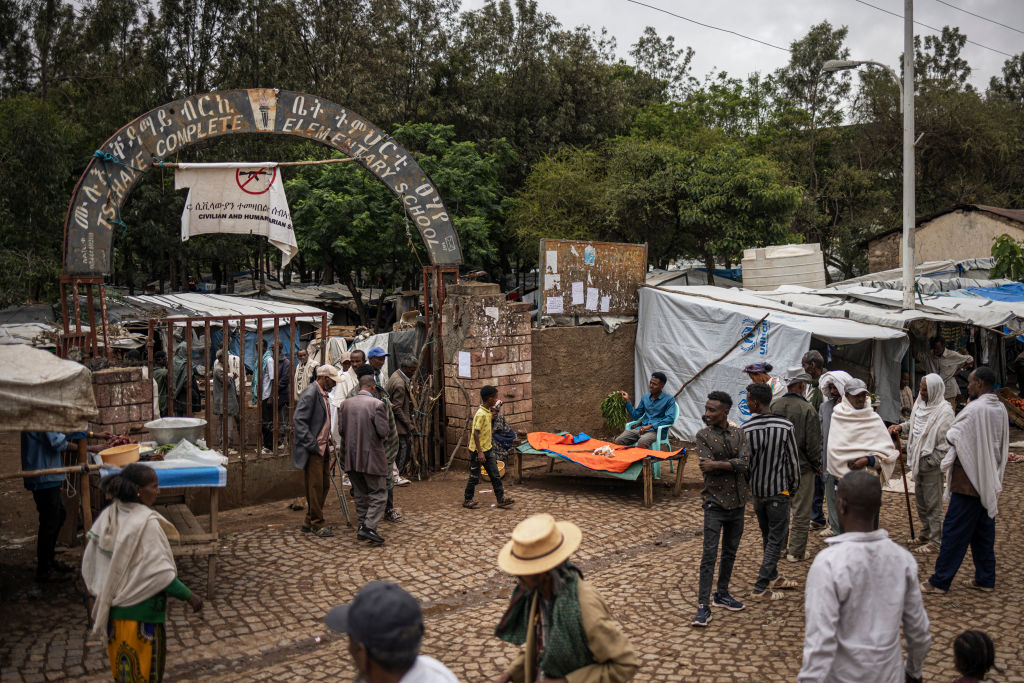ADF STAFF
When Ethiopian Prime Minister Abiy Ahmed signed the Pretoria peace accord in 2022, it stopped the war between the federal government’s coalition of forces and the Tigray rebels, but it did little to resolve the disputes between the Tigrayan and Amhara people over territory and resources.
The Pretoria Agreement did not resolve the issue of contested land or establish a process for the return and reintegration of internally displaced people (IDP) and refugees. In 2024, sporadic clashes over these issues have aggravated old wounds and are threatening to return the country to large-scale armed conflict.
“Sustainable peace requires a holistic approach, prioritizing the normalization of relationships between the Amhara and Tigray people, restoring trust among local communities, and addressing historical grievances,” Tingirtu Gebretsadik, a former sociology lecturer at Jigjiga University in the capital of Ethiopia’s Somali region, told ADF.
“The Pretoria Agreement falls short of these essential elements, instead perpetuating a cycle of violence and mistrust.”
When the Tigray region’s interim administration began its resettlement process for IDP in July, it unsurprisingly reignited tensions on land contested by the Amhara.
The return of 10,000 people to Alamata town in southern Tigray from IDP camps in Mehoni, about 45 kilometers to the north, sparked a two-day protest from ethnic Amhara residents in the city as they asserted that armed members of the Tigray Defence Forces were among the returnees.
Violent clashes between Tigrayan and Amhara people in and around Alamata began in February and expanded in April, triggering a significant deployment of federal security forces to the city. On July 4, Abiy’s government ordered Tigrayan forces to withdraw.
Although these violent episodes heralded the potential for the collapse of the Pretoria Agreement, most Ethiopians never viewed the peace accord as anything more than a flimsy deal to cease hostilities.
The Amhara boiled with anger at being left out of the negotiations in 2022. A prime issue was the historically contested parts of the southern and western Tigray region.
Since March, the federal government and the Tigray People’s Liberation Front (TPLF) have met twice to hold an Africa Union-facilitated Strategic Review on Implementation of the Pretoria Cessation of Hostilities Agreement (CoHA). The last meeting, on July 9 in Addis Ababa, addressed political dialogue, the return of IDP, and disarmament, demobilization and reintegration.
For the CoHA to hold, experts insist that peace, security and a national dialogue are necessary. Tingirtu believes the potential for the national dialogue to prevent further bloodshed hinges on a process that engages local communities and stakeholders.
“Such a process could prevent a resumption of large-scale armed conflict by addressing the root causes of the conflict, promoting trust and cooperation, and creating a more sustainable and inclusive peace,” he said.
However, issues like resettlement and disarming fighters must be addressed in Tigray before a national dialogue process can safely begin. Yonas Adaye, a member of Ethiopia’s National Dialogue Commission, said dialogue and reconciliation in other countries has failed when all voices are not heard. He worried the same could occur in Ethiopia.
“Some groups show little to no willingness to participate in the national dialogue process,” he said in a statement to Ethiopian media on July 16.
Horn of Africa researcher Tegbaru Yared, of the Institute for Security Studies, suggested that Ethiopia would benefit from a federally mandated nationwide cease-fire to help legitimize the national dialogue.
“To improve its chances of success, the government should make its ‘peacemaking through mediation’ approach comprehensive and extend an olive branch to the armed groups in Amhara,” he wrote in a July 22 analysis.
“Ethiopia’s competing political elites need to set aside factionalism and ethnic rivalry in favor of a negotiated political settlement through dialogue.”

